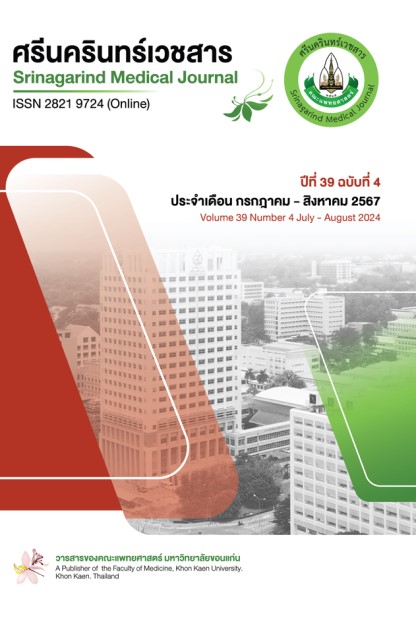Postoperative Urinary Retention Following Laparoscopic Hysterectomy for Benign Gynecologic Diseases
Keywords:
benign gynecologic disease, hysterectomy, laparoscopic surgery, minimally invasive surgery, postoperative urinary retentionAbstract
Background and Objective: One of the complications of major gynecological surgical operations is postoperative urine retention (POUR). Urinary retention following a complete laparoscopic hysterectomy (TLH) was much lower than following other types of hysterectomy; therefore, the aim of the study was to determine the incidence of postoperative urinary retention (POUR) following laparoscopic hysterectomy.
Methods: This is a descriptive design. One hundred sixty-four women who underwent laparoscopic hysterectomy for benign gynecologic conditions from January 2016 to December 2019. Patient characteristics, indications for hysterectomy, perioperative outcomes, perioperative complications and postoperative complications were recorded. The urinary catheter was removed the day after laparoscopic hysterectomy. Postoperative urinary retention (POUR) is defined as the inability to urinate that requires urinary drainage with straight or indwelling catheterization after the day of surgery.
Results: The mean age and body mass index (BMI) were 44.3 + 13.4 years and 24.0 + 4.2 kg/m2, respectively. Thirty-three patients (20.1%) were in postmenopausal, and nine patients (5.5%) had diabetes mellitus. The most common causes of hysterectomy were symptomatic uterine leiomyoma (45.1%), adenomyosis (16.5%), and endometrial hyperplasia (11.0%). Total hysterectomy via a laparoscopic approach was conducted in 152 patients (92.7%). Laparoscopic subtotal hysterectomy was performed in the remaining 12 cases (7.3%). No postoperative urinary retention was detected. Other postoperative complications included postoperative fever (1.8%), surgical site infection (0.6%), urinary tract infection (0.6%) and reoperation (0.6%).
Conclusion: The incidence of postoperative urinary retention is very low after laparoscopic hysterectomy in benign gynecologic diseases. In our study, no overt urinary retention was detected. The removal of urinary catheters the day after surgery for laparoscopic hysterectomy patients is safe and suitable.
References
Flory N, Bissonnette F, Binik YM. Psychosocial effects of hysterectomy: literature review. J Psychosom Res 2005;59(3):117–29. doi:10.1016/j.jpsychores.2005.05.009
Kang HW, Lee JW, Kim HY, Kim BW, Moon CS. Total laparoscopic hysterectomy via suture and ligation technique. Obstet Gynecol Sci 2016;59(1):39–44. doi:10.5468/ogs.2016.59.1.39.
Oh SJ, Lee SY, Kim WY, Kang J, Han KH, Lee SH, et al. Comparison between transumbilical and transvaginal morcellation of a large uterus during single-port-access total laparoscopic hysterectomy. Obstet Gynecol Sci 2020;63(3):379–86. doi:10.5468/ogs.2020.63.3.379.
Zaritsky E, Tucker LY, Neugebauer R, Chou T, Flanagan T, Walter AJ, et al. Minimally invasive hysterectomy and power morcellation trends in a West Coast Integrated Health System. Obstet Gynecol 2017;129(6):996–1005. doi:10.1097/AOG.0000000000002034.
Tammela TL, Levin RM, Monson FC, Wein AJ, Longhurst PA. The influence of acute overdistension on rat bladder function and DNA synthesis. J Urol 1993;150 (5 Pt 1):1533–9. doi:10.1016/s0022-5347(17)35836-6.
Alessandri F, Mistrangelo E, Lijoi D, Ferrero S, Ragni N. A prospective, randomized trial comparing immediate versus delayed catheter removal following hysterectomy. Acta Obstet Gynecol Scand 2006;85(6):716–20. doi:10.1080/00016340600606976.
Chong C, Kim HS, Suh DH, Jee BC. Risk factors for urinary retention after vaginal hysterectomy for pelvic organ prolapse. Obstet Gynecol Sci 2016;59(2):137–43. doi:10.5468/ogs.2016.59.2.137.
Dunn TS, Shlay J, Forshner D. Are in-dwelling catheters necessary for 24 hours after hysterectomy? Am J Obstet Gynecol 2003;189(2):435–7. doi: 10.1067/s0002-9378(03)00496-4.
Kafy S, Huang JYJ, Al-Sunaidi M, Wiener D, Tulandi T. Audit of morbidity and mortality rates of 1792 hysterectomies. J Minim Invasive Gynecol 2006;13(1):55–9. doi:10.1016/j.jmig.2005.10.003.
Wong MC, Isaacson K, Morris S. Into the void: a review of postoperative urinary retention after minimally invasive gynecologic surgery. Curr Opin Obstet Gynecol 2018;30(4):260–6. doi:10.1097/GCO.0000000000000465.
Kekre AN, Vijayanand S, Dasgupta R, Kekre N. Postpartum urinary retention after vaginal delivery. Int J Gynaecol Obstet Off Organ Int Fed Gynaecol Obstet 2011;112(2):112–5. doi:10.1016/j.ijgo.2010.08.014.
Petros JG, Alameddine F, Testa E, Rimm EB, Robillard RJ. Patient-controlled analgesia and postoperative urinary retention after hysterectomy for benign disease. J Am Coll Surg 1994;179(6):663–7.
Bodker B, Lose G. Postoperative urinary retention in gynecologic patients. Int Urogynecol J Pelvic Floor Dysfunct 2003;14(2):94–7. doi:10.1007/s00192-003-1038-3.
Ghezzi F, Cromi A, Uccella S, Colombo G, Salvatore S, Tomera S, et al. Immediate Foley removal after laparoscopic and vaginal hysterectomy: determinants of postoperative urinary retention. J Minim Invasive Gynecol 2007;14(6):706–11. doi:10.1016/j.jmig.2007.06.013.
Liang CC, Lee CL, Chang TC, Chang YL, Wang CJ, Soong YK. Postoperative urinary outcomes in catheterized and non-catheterized patients undergoing laparoscopic-assisted vaginal hysterectomy-a randomized controlled trial. Int Urogynecol J Pelvic Floor Dysfunct 2009;20(3):295–300. doi:10.1007/s00192-008-0769-6.
Sandberg EM, Twijnstra A, van Meir CA, Kok HS, van Geloven N, Gludovacz K, et al. Immediate versus delayed removal of urinary catheter after laparoscopic hysterectomy: a randomised controlled trial. BJOG Int J Obstet Gynaecol 2019;126(6):804–13. doi:10.1111/1471-0528.15580.
The American Fertility Society. Revised American Fertility Society classification of endometriosis: 1985. Fertil Steril.1985;43(3):351–2. doi: 10.1016/s0015-0282(16)48430-x.
Operative Laparoscopy Study Group. Postoperative adhesion development after operative laparoscopy: evaluation at early second-look procedures. Fertil Steril 1991;55(4):700–4.
Seo ES, Lee SH, Chon SJ, Jung SY, Cho YJ, Lim S. Influence of previous abdominal surgery on clinical outcomes of patients undergoing total laparoscopic hysterectomy. Obstet Gynecol Sci 2018;61(3):379–85. doi:10.5468/ogs.2018.61.3.379.
Baldini G, Bagry H, Aprikian A, Carli F. Postoperative urinary retention: anesthetic and perioperative considerations. Anesthesiology 2009;110(5):1139–57. doi:10.1097/ALN.0b013e31819f7aea.
Downloads
Published
How to Cite
Issue
Section
License
Copyright (c) 2024 Srinagarind Medical Journal

This work is licensed under a Creative Commons Attribution-NonCommercial-NoDerivatives 4.0 International License.




